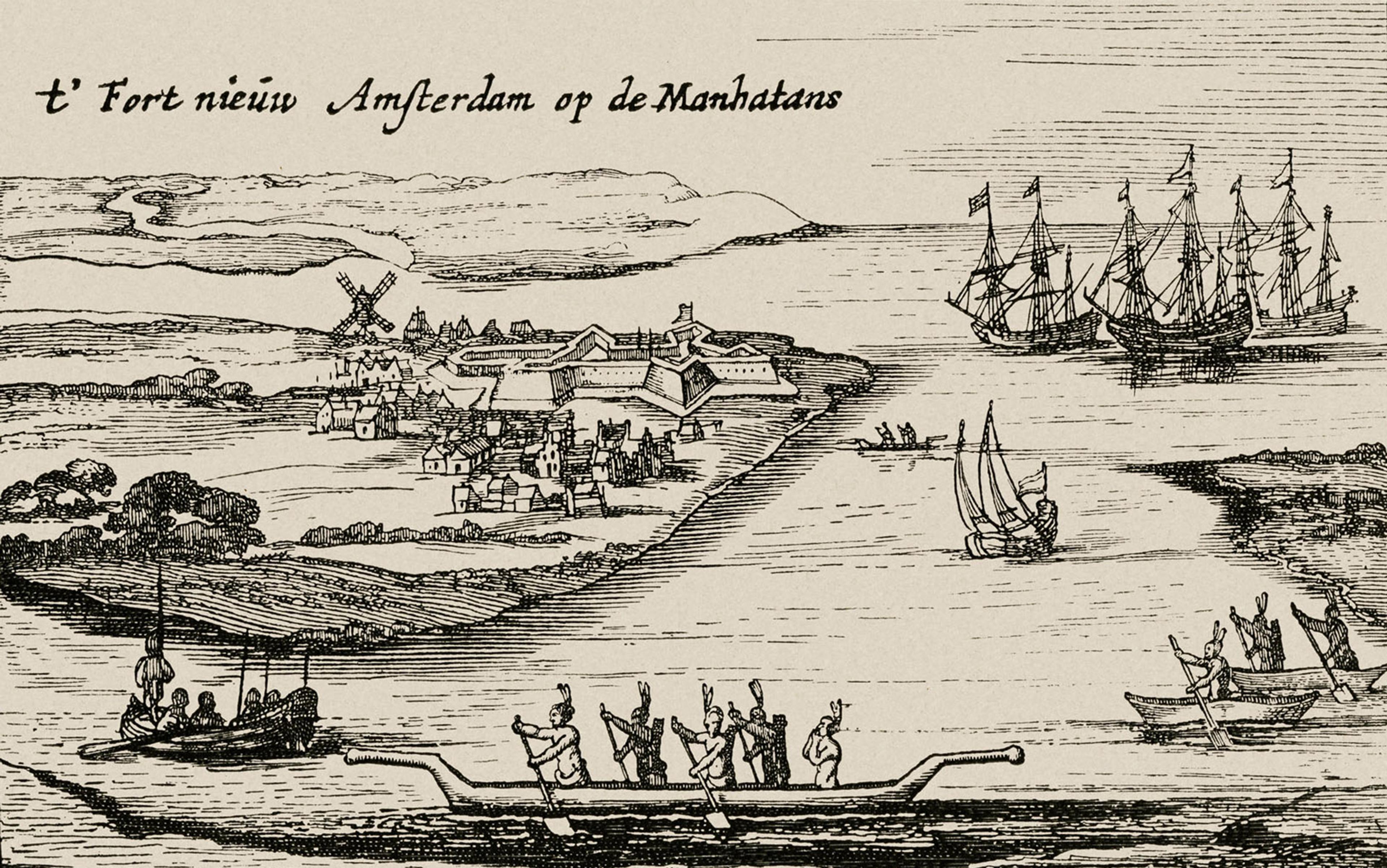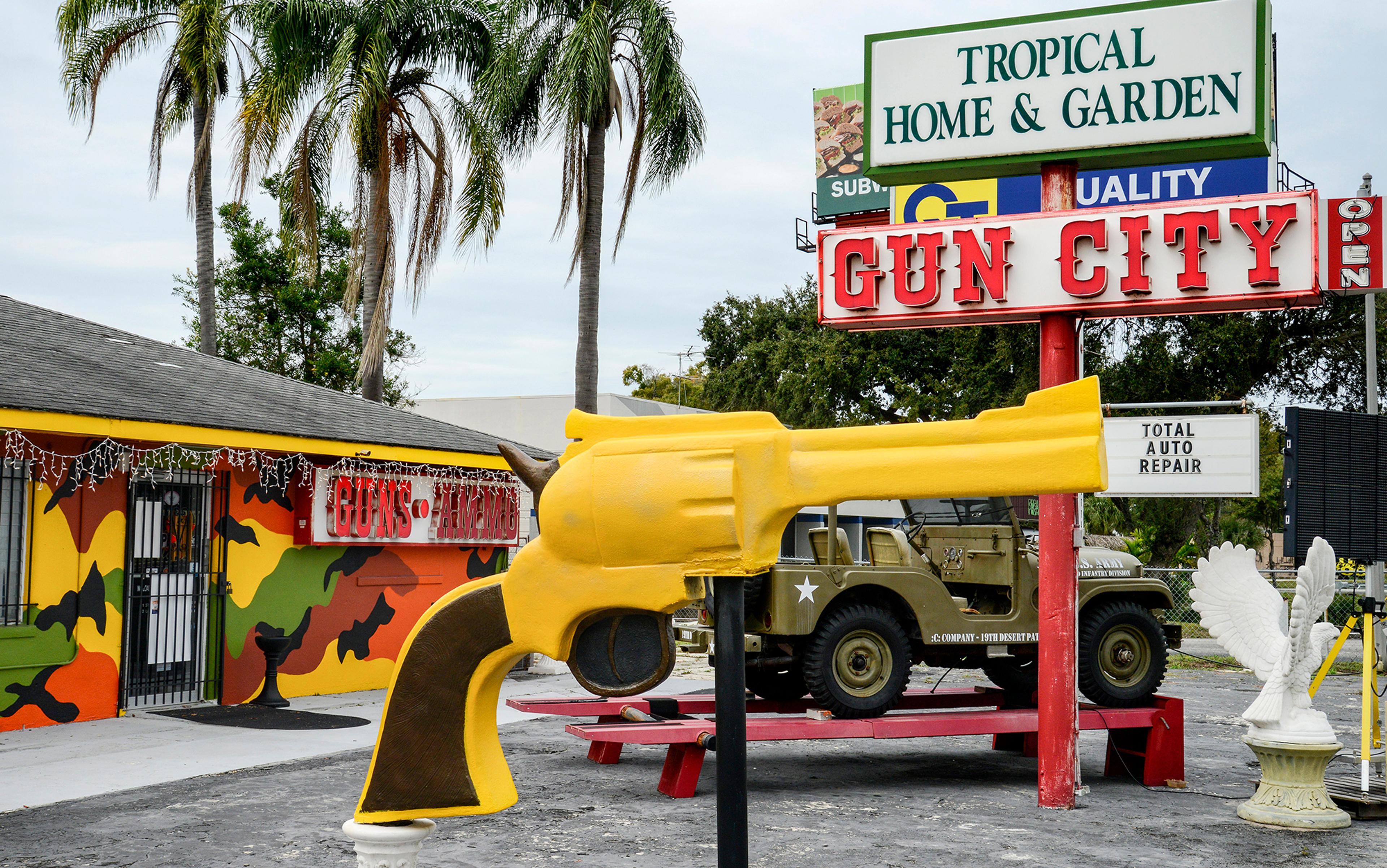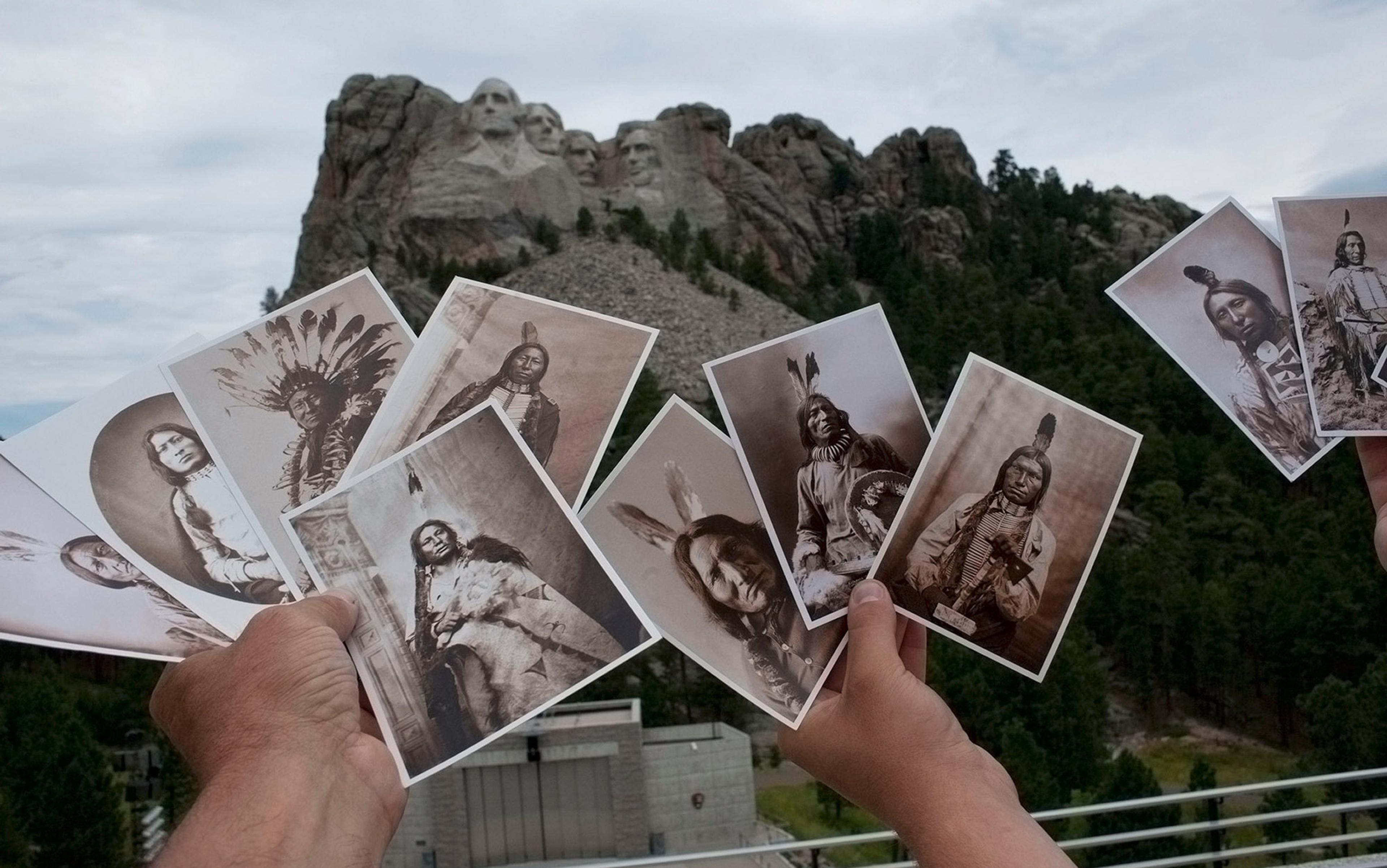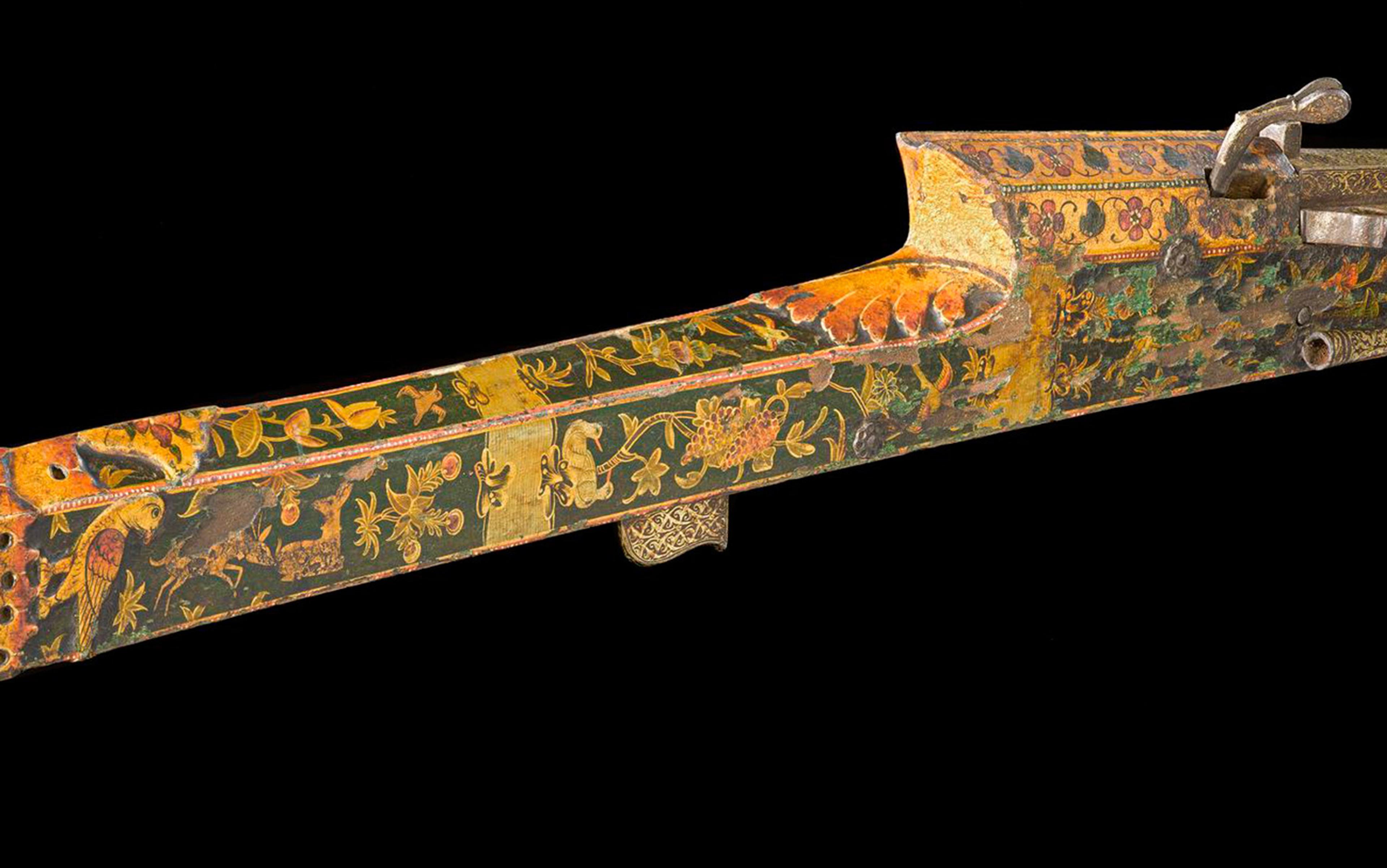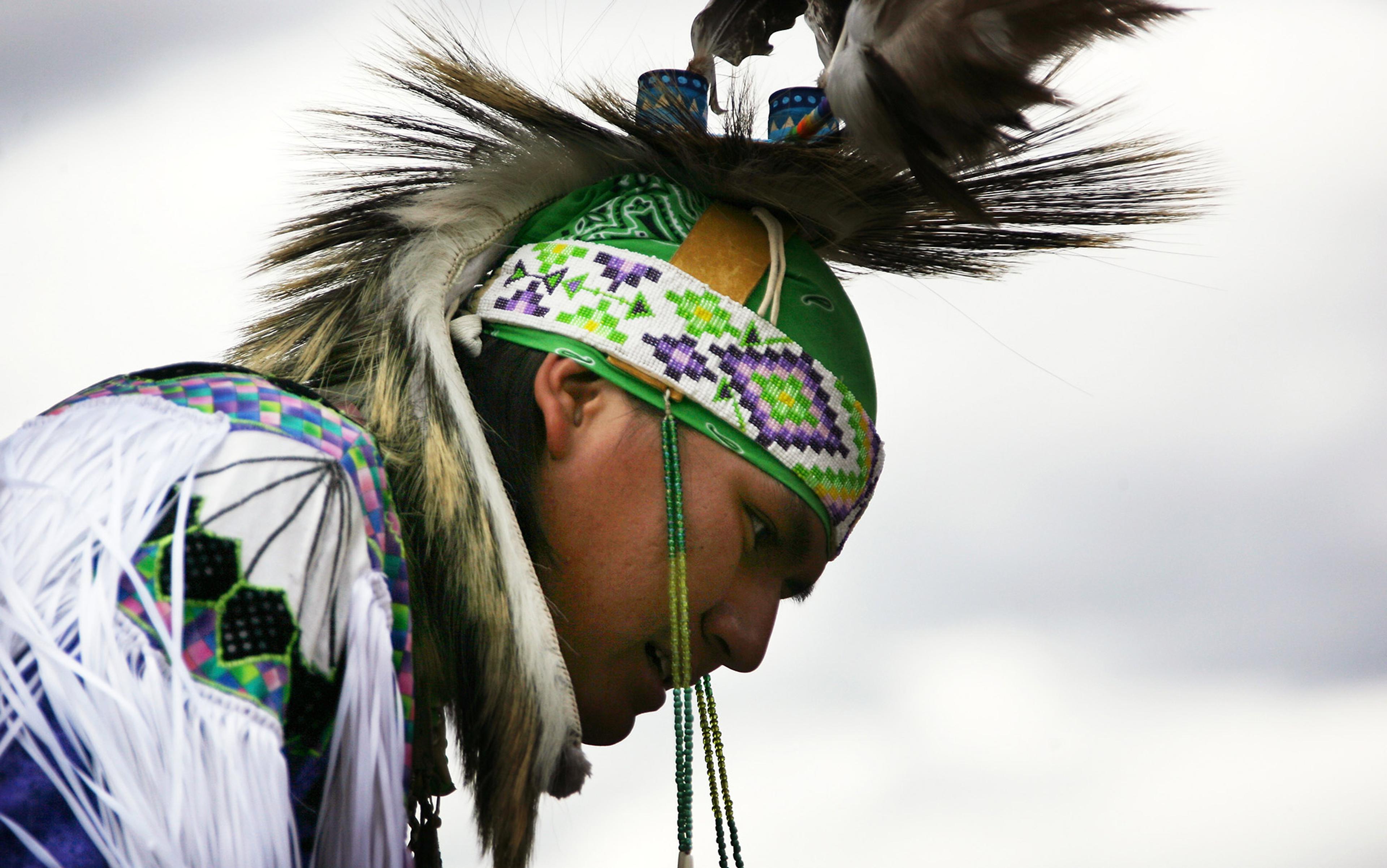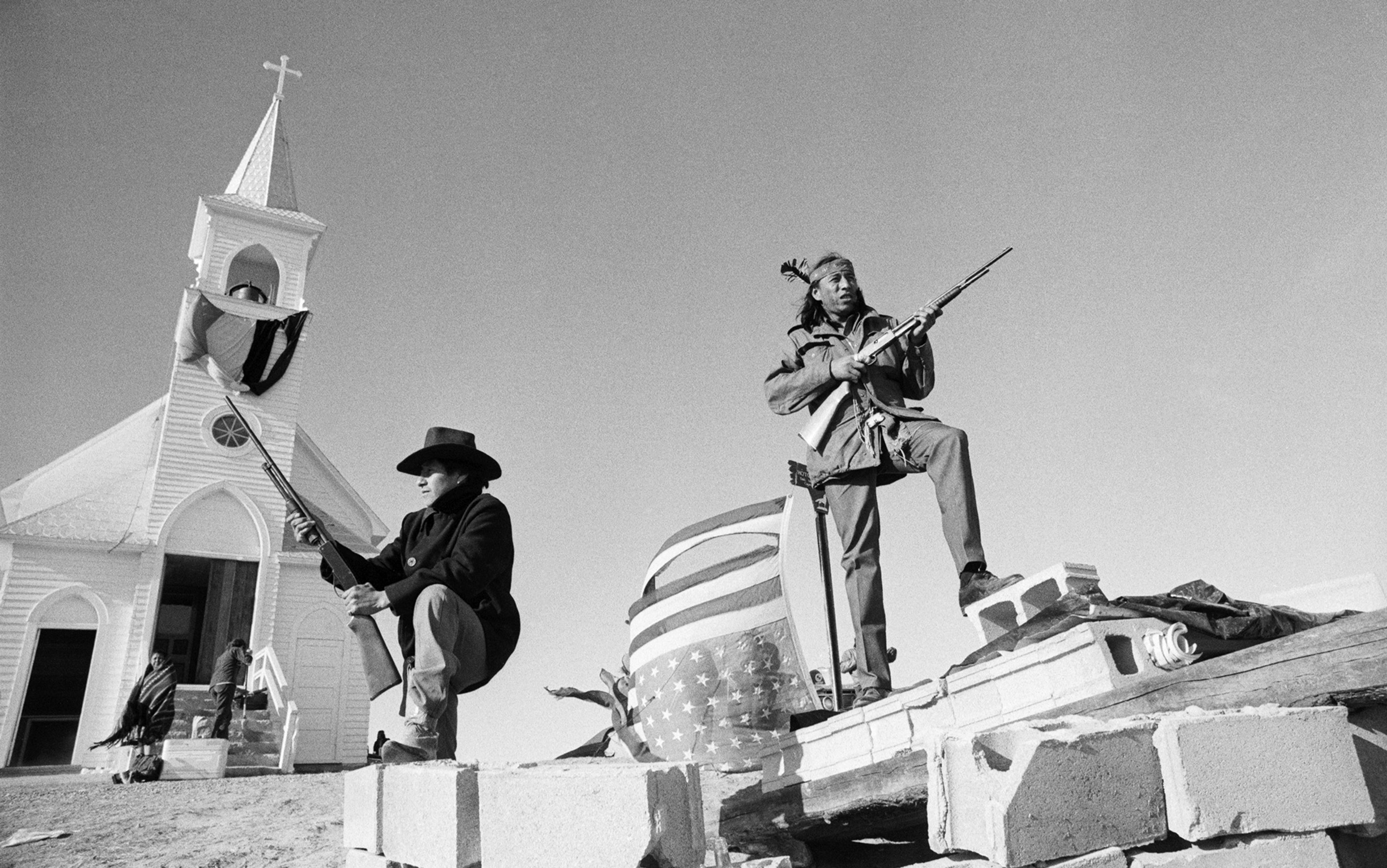It has become commonplace to attribute the European conquest of the Americas to Jared Diamond’s triumvirate of guns, germs and steel. Germs refer to plague, measles, flu, whooping cough and, especially, the smallpox that whipsawed through indigenous populations, sometimes with a mortality rate of 90 per cent. The epidemics left survivors ill-equipped to fend off predatory encroachments, either from indigenous or from European peoples, who seized captives, land and plunder in the wake of these diseases.
Guns and steel, of course, represent Europeans’ technological prowess. Metal swords, pikes, armour and firearms, along with ships, livestock and even wheeled carts, gave European colonists significant military advantages over Native American people wielding bows and arrows, clubs, hatchets and spears. The attractiveness of such goods also meant that Indians desired trade with Europeans, despite the danger the newcomers represented. The lure of trade enabled Europeans to secure beachheads on the East Coast of North America, and make inroads to the interior of the continent. Intertribal competition for European trade also enabled colonists to employ ‘divide and conquer’ strategies against much larger indigenous populations.
Diamond’s explanation has grown immensely popular and influential. It appears to be a simple and sweeping teleology providing order and meaning to the complexity of the European conquest of the Western hemisphere. The guns, germs and steel perspective has helped further understanding of some of the major forces behind globalisation. But it also involves a level of abstraction that risks obscuring the history of individuals and groups whose experiences cannot be so aptly and neatly summarised.
Invoking guns, germs and steel, or Alfred Crosby’s older catchphrase ‘Virgin Soil Epidemics’ (1976), as a blanket explanation for colonial American history can fundamentally misrepresent the historical experience. It can both erase the experiences of some Native peoples that did not adhere to these schemas, and reduce the staggering violence that Euro-Americans inflicted on Native people to a kind of over-determined background noise.
At a time when people are debating the nature and origins of globalisation, and the making and meaning of modern American society, we need a careful and more sophisticated understanding of this crucial chapter in history. Similarly, thinking of Indians as pawns in a fixed game overlooks how many of them harnessed colonial forces to their own agendas, for greater or lesser periods of time. Many Native peoples carved out lives for themselves amid the destructiveness and degradation of Euro-American rule.
Scholarship is uncovering the myriad ways that Native people addressed the ruin of epidemic disease. These responses included binding together with previously distinct communities to form more viable tribal groups or confederacies, raiding neighbouring peoples for captives to buttress their populations, instituting quarantines to check subsequent outbreaks, and experimenting with Christianity or new Native religious rituals in search of spiritual succour. Through such measures, some groups, the Cherokees, Iroquois and Blackfeet, for example, not only managed to rebuild their numbers, but probably grew more powerful than before.
European technological superiority, particularly in terms of guns, cannot serve as a blanket explanation for Euro-Americans’ ultimate triumph over Native North Americans. In early Quebec, Jamestown and Plymouth, colonists held an advantage in firearms only for a handful of years before Native people began building their own arsenals. The founders of later colonies, such as Pennsylvania or Georgia, arrived to find indigenous people already furnished with the best gun technology Europe could produce and keen to acquire more. Except under the rarest circumstances, no one state authority had the ability to choke Indians off from guns, powder and shot. There were just too many rival imperial powers and colonies in North America, their governments were weak, and the trade ran through a labyrinth of unofficial channels such as itinerant fur traders, Native middlemen and smugglers. Indians often wielded better weapons than Euro-Americans, including their armed forces. Europeans and, later, white Americans, controlled the manufacturing of firearms technology, but their leaders exercised little authority over its distribution in Indian country.
Macro-historical analyses such as Diamond’s cannot fully account for this history. It was a product of on-the-ground politics, of individuals and groups, including indigenous people, making decisions. Their actions created a world awash in guns and, with it, waves of terrible gun violence.
Attributing too much explanatory power to European technological superiority has obscured this critical story. So too has the stubborn presumption that Native people valued firearms less for their capacity to kill than for their ‘psychological effect’, which is to say, for the terror induced by their pyrotechnics. Without question, Indians were generally awestruck when they first experienced the firing of a gun. But it took little time for them to grow accustomed to the sound and flash, and to learn the practical applications of this tool. They traded for firearms in large quantities and used them in warfare and hunting because they recognised that guns were superior to the bow and arrow, especially for setting ambushes, besieging fortified settlements and hunting deer.
Native tribes competed furiously to control emerging gun markets. They knew that firearms were the new key to military and political dominance, and if they did not seize the opportunity, their enemies would. As a result, indigenous arms races erupted across North America. The deep consequences of these arms races for intertribal politics, Indian-colonial relations, imperial rivalries and the fur trade made them among the most formative influences in North American history between the early 17th and late 19th centuries.
Indians’ military need for guns rarely translated into subservience to a particular European colony
If Indians competed with each other to engross the colonial arms trade, so too did colonial interests vie for Indian favour through the sale and gifting of munitions. The Indian trade was a basic source of colonial wealth and an essential part of the colonies’ recruitment of Indian military allies. What Indians wanted most in exchange for their friendship was guns, powder and shot. It is testimony to the Indians’ influence that colonial states complied with this demand to the point that the Iroquois, the Creeks and other prominent groups often received most of their arms and gunsmithing free of charge. Indian commercial leverage is also evident in the black markets for weapons that emerged whenever colonial authorities tried to institute bans on the arms trade. Indian-colonial interdependence meant that Indians’ military need for guns rarely translated into subservience to a particular European colony or empire.
These features of Native Americans’ adoption of firearms come into relief through the life of one of the most important figures of 17th-century New England, the sachem (or chief) Ninigret of the Niantics and Narragansetts of what is today Rhode Island. Ninigret was always acutely concerned with guns. He tried to direct arms toward his people and away from his enemies, and formed alliances with well-armed tribes and colonies to fend off other Indian-colonial blocs. Ninigret’s story is a window into how Native Americans used guns to transform their world and that of colonial North America.
Ninigret came of age during the early 1600s when military considerations loomed large in the politics of Native New England. In the previous centuries, the emergence of corn-beans-squash horticulture and competition for prime planting grounds had encouraged indigenous people to centralise their fluid, kin-based hunting bands. Their new social formation was the sachemship, a town-sized territory of up to a few thousand people under the leadership of a sachem from an elite lineage.
By Ninigret’s time, sachemships also confederated into tribes, sometimes voluntarily, at other times out of force. Ninigret’s Niantic people, for instance, belonged to a regional network of sachemships known as the Narragansett tribe. The Narragansett sachems Canonicus and his nephew Miantonomi collected tribute from and directed the foreign affairs of the Manisses of Block Island and the Cowesetts, Shawomets and Patuxets of northwest Narragansett Bay. Ninigret’s Niantics served as the front line of the Narragansetts’ western military frontier with the Pequots of what is now Connecticut. In turn, Narragansett and Niantic elites formed ‘continual intermarriages’, as Miantonomi put it, to strengthen the bond.
By virtue of their ferocious reputation and their membership in the Iroquois League, the Mohawks of the Mohawk River Valley in upstate New York were the great wildcard in the Northeast. The Iroquois League was, in essence, a nonaggression pact that provided the Mohawks, Oneidas, Onondagas, Cayugas and Senecas with peace in their backyards, even as it freed them to direct their warriors against outsiders. The ceremonies that held the League together involved the ritual exchange of strings of wampum (shell beads) manufactured by the Indians of coastal New England and Long Island. The Narragansetts and Pequots competed to supply the Iroquois market and, in turn, to acquire wampum-paying tributaries in order to win Mohawk friendship and escape Mohawk aggression.
European colonists became crucial players in the Indians’ multipolar politics. To be sure, the first colonies in the Northeast – New France on the St Lawrence River, Plymouth near Cape Cod, and New Netherland on the Hudson River – were unimpressive in terms of population. But they had substantial commercial reach. In the 1630s, a true swarming began. English puritans arrived by the thousands to create the colony of Massachusetts, and quickly spread into the Connecticut River Valley, Narragansett Bay and eastern Long Island. These developments were the real first stage of European conquest, but that is only clear in retrospect. Indians, by contrast, saw the colonies as potential trade partners, especially for firearms, and new, powerful allies to direct against their Native rivals.
The Mohawks were the first group to take advantage of the opportunity. Within a decade of the Dutch establishment of Fort Orange (Albany) in 1626, right on the Mohawks’ doorstep, the tribe had an arsenal of 400 muskets and plenty of ammunition. As a whole, the Iroquois League possessed at least twice as many guns. The Mohawks and members of the Iroquis League used this weaponry to wipe out rivals in the fur trade and seize their people as captives. The Hurons, Eries, Susquehannocks and many others in the Great Lakes and Ohio country met this unfortunate end. New England tribes trembled at the thought of becoming the next victims. To avoid this fate, Ninigret and the Narragansetts made regular gifts of wampum to the Mohawks to cultivate them as friends. The Narragansetts also pursued colonial trade and alliance, only to have the strategy backfire.
The intensity of intertribal rivalry meant that those who failed to build up their arsenals would suffer at the hands of those who did
In 1636-37, the Narragansetts supported the colonies of Massachusetts and Connecticut in a war against the Pequots. The English wanted to chastise the Pequots for refusing to turn over accused murderers to colonial justice. The Narragansetts participated as English allies in the hopes of reducing their primary rival and claiming the spoils. But, instead, the Mohegans under the sachem Uncas stepped into the Pequot vacuum, adopting most of the Pequot survivors and claiming the Pequot tributary network. In this, Massachusetts and Connecticut supported Uncas. The English colonies saw Uncas as a wedge against Narragansett expansion. Thus, the Pequot War had barely ended before the Narragansetts and Mohegans were at blows. The Narragansett-Mohegan conflict culminated in Uncas capturing and executing the great Narragansett sachem (and Ninigret’s brother-in-law) Miantonomi. Ninigret then made it his life mission to revenge this murder on Uncas regardless of who tried to stop him, including the English. Firearms would prove critical to his ambition.
It is common to deride early modern firearms as slow to load, inaccurate and undependable in wet weather. Indians had a more favourable opinion of these weapons, particularly of the flintlock muskets that became available at the beginning of the 1630s. Older matchlocks operated by lowering a lit wick into a pan of gunpowder. Firing the flintlock, in contrast, involved pulling the trigger to thrust a clamp (or ‘cock’) holding a piece of flint against a small metal plate (or ‘steel’), creating a shower of sparks that ignited the priming powder and then the main charge. Flintlocks were still cumbersome. They required about 25 seconds to load, and were accurate only to about 100 yards. Yet Indians did not intend to use the weapon in open-field, pitched battles. Rather, they wanted flintlocks to fire on human or animal targets from ambush at close range. After firing, they would rush in with hand weapons. The manner in which Native peoples used guns is critical to understanding their demand for them.
Indians valued the flintlock less for the terror it instilled than for its power. Unlike arrows, which needed a clear path to their target, bullets could pass through the camouflage of tall grasses and even thickets without being diverted. Whereas arrows shot from long distances could be dodged, musket balls could not. The damage inflicted by a bullet wound was far greater than that of an arrow. Killing an enemy with an arrow required hitting a vital organ. By contrast, when a lead ball struck its victim, it carried roughly six times more kinetic energy than an arrow, expanded to the size of a large fist, and left behind a medical disaster. A direct hit dropped an enemy or deer in its tracks. At especially close range, gunners could load their weapons with small shot consisting of several small lead balls instead of a single slug. What this approach sacrificed in terms of accuracy and force, it compensated for in the large, cloud-shaped area covered by the blast, which could disable more than one person at a time.
Though Indians continued to use bows and arrows, hatchets and clubs alongside muskets, they could not mistake that warriors with guns routinely won victories over those without them. The intensity of intertribal rivalry meant that those who failed to build up their arsenals would suffer at the hands of those who did. For this reason, the opening of colonial markets set off Indian arms races throughout Native America.
New England presented Ninigret with as favourable a gun market as anywhere else on the continent. Among the English alone there were five different colonies competing for the Indian trade. The French and especially the Dutch, the premier arms producer of Europe, were also accessible trading partners. The Dutch manufactured light, short, durable guns specifically for the Native American market. The craggy coastline was ideal for smuggling, and most of Indian country was so remote from colonial centres that magistrates could do little to police the arms trade even when they wanted to.
Gunsmithing was an essential part of Indian-colonial relations. Diplomacy often involved colonial governments providing Indians with free gun repairs, including sending smiths to live in Indian villages. A handful of Natives developed their own gunsmithing skills after apprenticing under English masters. More generally, Indian men learned to cast musket balls from cheap bar lead and to make minor repairs to flintlock firing mechanisms and gun barrels. This Indian self-sufficiency, like the multilateral, lawless nature of the gun market, robbed the colonies of leverage stemming from the Indians’ growing dependence on European technology.
Led by Ninigret, the Narragansetts built up a formidable arsenal in their quest to exact revenge on Uncas and the Mohegans. In May 1645, a Narragansett army wielding 30 guns made a surprise assault on the Mohegans, killing six and injuring numerous others, ‘most of which were wounded with bullets’, according to an eyewitness. The puritan colonies demanded Ninigret to pay for the damages, but instead he warned them to quit protecting Uncas or else he would call on Mohawk gunmen for support. Together, he threatened, the Narragansetts and Mohawks ‘would lay the English cattle on heaps as high as their houses, that no English man should stir out of his house to piss, but he should be killed’.
To counter English support for Uncas, Ninigret turned to the Dutch for guns. In 1653, rumours spread that Ninigret had gone to Manhattan to meet with Peter Stuyvesant, New Netherland’s governor-general, and collect a large Dutch gift of munitions. Afterward, Ninigret was said to have called on other Indians to join him and the Dutch in a strike against the New England colonies and the Mohegans. Many feared that a great war was brewing.
English, Dutch and French competition for Indian trade meant that Ninigret’s warriors were as well-armed as Englishmen
Shortly after his return from New Netherland (which he admitted visiting), Ninigret led his warriors on four consecutive raids against Long Island Indians that the English counted as protectorates. He even burned one of his Native prisoners at the stake within sight of an English town. In September 1653, Ninigret greeted an English delegation sent to question him by presenting a company of ‘many armed men’, including a Mohawk, ‘…and himself a pistol in his hand … and some of them charged their guns with powder and bullets and some primed their guns’. Ninigret had signalled his readiness for war.
In 1659, Ninigret’s Dutch armament and Mohawk support emboldened him to revive his war against Uncas. Narragansett gunmen fanned out in pursuit of the Mohegans wherever they could find them, including at the farm and trading post of the Englishman Jonathan Brewster, just outside the walls of Uncas’s fort. The warriors killed one of Brewster’s Mohegan servants clinging to the waist of Brewster’s wife. They forced themselves at gunpoint into his house and then finally riddled his home with bullets from 11 guns. The Narragansetts’ explanation was that Brewster ‘did furnish Uncas with guns, powder, and shot’.
Ninigret could afford to ignore English threats. The competition between multiple English, Dutch and French colonies for Indian trade, combined with the black market of gunrunners, meant that Ninigret’s warriors were as well-armed as Englishmen. Furthermore, the Narragansetts’ wampum trade meant that they had the backing of formidable Mohawk gunmen. From Ninigret’s perspective in the late 1650s, he had every reason to believe that these conditions would last indefinitely. But that was not to be.
The 1664 English conquest of New Netherland and the creation of the colony of New York destroyed Ninigret’s leverage with the New England colonies. It robbed him of using Dutch material and political aid to counter Uncas’s English support. Ninigret also lost his valuable alliance with the Mohawks. With the Dutch authority gone, the Mohawks were unwilling to risk alienating the English, especially in light of the tribe’s ongoing hostilities with New France and a variety of indigenous nations. Suddenly, Ninigret could no longer use the Mohawks and Dutch to offset the English-Mohegan axis.
Ninigret had been the likeliest candidate to lead an intertribal anticolonial resistance but, after the 1664 defeat of his Dutch allies, that possibility was gone. Ninigret knew it too, and when King Philip’s War broke out in the summer of 1675, he refused to join the Wampanoags, Nipmucs and even his fellow Narragansetts against the English. The sachem distanced his Niantic community from the uprising by calling in his warriors from abroad, delivering colonial authorities to a number of Wampanoag heads, and proposing a grand peace plan. He took these actions not out of any warmth for the English, but realpolitik. He knew that, without the Mohawks, the campaign against the English was doomed.
Initially, the warring Indians had the upper hand. They devastated English military forces and more than a dozen towns by employing their firearms expertly in ambushes and dawn-light strikes. Each victory netted them untold amounts of military plunder for use in the next strike. At least two Native gunsmiths and probably some captive English smiths served the Indian resistance.
The most important sites for the warring Indians to replenish their arsenals were along the Hudson River. The warring Indians made their winter camp near the confluence of the Hoosick River and the Hudson, just north of Albany, which turned into a rendezvous visited by Abenaki middlemen peddling muskets, powder and shot from French sources along the St Lawrence. English captives reported that, after one of these trade fairs, the warring Indians could boast 2,100 young men ‘most of them armed with good firelocks, and full of ammunition’.
The governor had promised the Mohawks ‘ammunition, arms, and all they wanted’. The Mohawks wanted guns
It’s the Dutch merchants who remained in Albany after the English conquest who also served as a source for munitions. The New York Governor Edmund Andros prohibited any trade with Indian militants, but arms dealers could operate through Native middlemen. An Indian who spied for the English told that the warring Indians were able to acquire Dutch gunpowder from the neutral Mohicans, Wappingers, and Paugussetts.
Ninigret’s concerns about New York’s Mohawk allies proved prescient. In February 1676, hundreds of Mohawk gunmen fell on the Hoosick rendezvous, driving the warring Indians back into the heart of New England where English soldiers and their Native allies awaited. The Mohawks kept up the pressure into the summer with raids against militant camps in the upper Connecticut River Valley and even farther east. Part of their motivation came from governor Andros, who had promised the Mohawks ‘ammunition, arms, and all they wanted’. Like the Narragansetts, the Mohawks wanted guns.
Within a few months, the warring Indians were nearly out of gunpowder. English victories grew increasingly lopsided. For instance, in July 1676, the Connecticut Major John Talcott, at the head of 300 colonial soldiers and 100 allied Mohegans and Pequots, clashed with the Narragansetts at Nipsachuck in northern Rhode Island. In less than three hours, the English and their Native allies killed or captured 171 of the enemy while suffering just two casualties. Two days later, this same army killed 67 Narragansetts and captured 27 on Warwick Neck, with no losses. By late summer 1676, the conflict in southern New England was essentially over. Quietly, Ninigret’s Niantics offered refuge to Narragansett survivors fleeing death or slavery at colonial hands. As soon as this new phase of Anglo-colonial dominance began, in the fall of 1676, Ninigret died. He must have been unable to bear the thought of it after fighting for so long, as he put it, ‘to right my own quarrel’.
Guns played a decisive role in the outcome of King Philip’s War. But the story is easy to get wrong. After decades of steady access to a dynamic gun market supplied by multiple colonies, empires and Indian middlemen, anti-colonial Indian warriors had grown dependent on firearms. When the war began, they had ample martial stores. They were also more skilled with firearms than their English counterparts. Colonists felt the deadly effects throughout the first months of the conflict. The New England colonies tried to cut off the warring Indians’ access to guns and ammunition by threatening capital punishment on anyone who dared to supply the Indian enemy. Yet as long as the Natives had access to Dutch traders in Albany and the French on the St Lawrence, directly or through Indian brokers, English measures to stop the arms flow were not enough to seriously inhibit the Indians’ war effort. The warring Indians were dependent on guns, powder and shot. But they were not dependent on the English.
What ultimately turned the anti-English Indians’ reliance on firearms from a strength to a liability had little to do with the New England colonies themselves. Rather, it was the Mohawks, whose interest in protecting relations with New York led them to drive away the New England Indians from the Hudson River arms markets. This was doubly unfortunate for the anti-English Indians. Deprived of access to the arms trade, and driven back from the Hudson River Valley by the Mohawks, they found a reinforced enemy awaiting them, including hundreds of Wampanoags. These Wampanoags had switched sides in exchange for their lives and for munitions from the English, to protect themselves from the Mohawks. The outcome of New England’s great Indian-colonial war, like most Indian-colonial wars, rested less on brute colonial strength, than on multilateral political dynamics in Indian country, tied to the Indian demand for guns and ammunition.
For indigenous people all across North America, European colonisation meant more than withering in the face of epidemic diseases and European technological superiority. It also meant the opportunity for Indians to adopt firearms, to transform their ways of war, to change intertribal relations, to engage in colonial diplomacy, and to try new economies. They sought to empower themselves, not in accordance with some general pan-Indian identity, but as particular communities, tribes and confederacies. They almost always saw their own rise as predicated on the exploitation of other indigenous people.
Native Americans’ zealous adoption and use of guns against their neighbours dramatises that the problem of guns in America is centuries old
Thus, the spread of guns meant the spread of awful gun violence. The availability of guns gave rise to societies of predatory Indian gunmen who terrorised entire regions. Attempting to counter the threat, weaker indigenous societies allied with each other and with colonial powers. Worse still, while Native people turned their guns on each other, colonial societies grew stronger and stronger. Eventually, they became the greatest danger to Indian life. Ninigret had to confront this hard lesson at the end of his life amid King Philip’s War. Over the course of the 18th and 19th centuries, many other Native societies would face similar dilemmas.
There is so much to learn about the world through the study of Native America. For instance, one realises that this supposedly New World was, in fact, quite old, full of ancient, complex societies of remarkable diversity. The myth of the noble savage, which has sprung back to life in New Age religious circles, shatters as one confronts indigenous people in three-dimensional form. They possessed all the ambition, jealousy, violence and Machiavellian spirit that one would expect to find among any other human population.
Recognising that North America was full of millions of indigenous people and not an empty wilderness also reveals the violence inherent in the spread of European colonies and the United States across the continent. Not least, grappling with Native Americans’ zealous adoption of guns, and use of them against their neighbours, dramatises that the problem of guns in America is centuries old. It long predates the birth of the US, the writing of the Second Amendment, and the modern mass killings and street shootings that have become signatures of the nation.
Thundersticks: Firearms and the Violent Transformation of Native America (2016) by David J Silverman is published via Harvard University Press.
